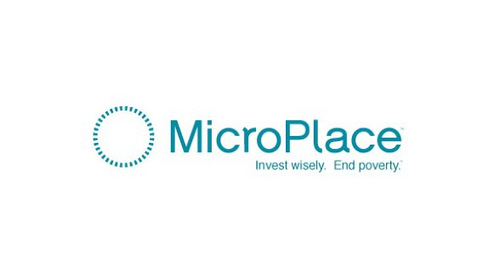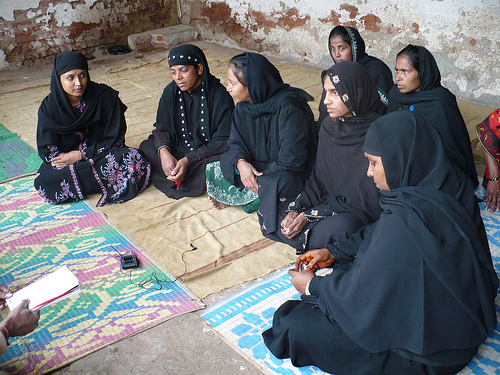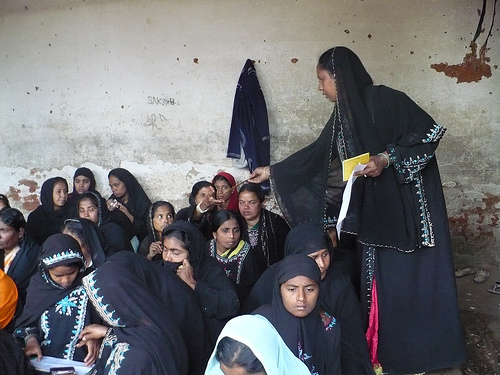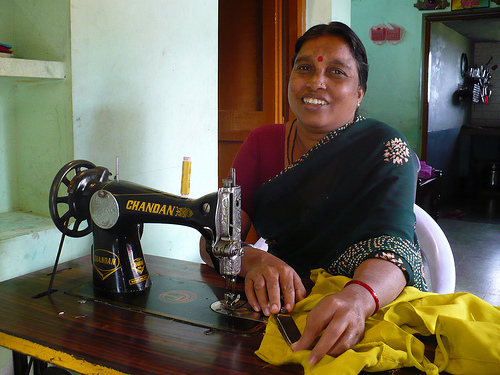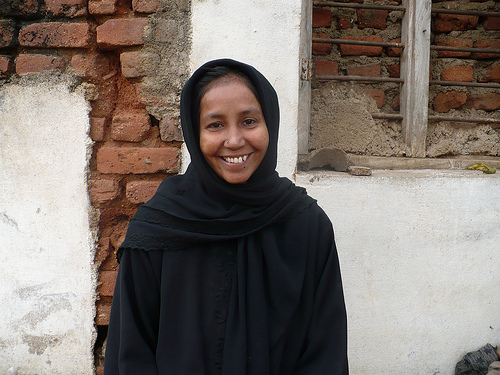Ink has never been, and will never be, a platform to further an individual’s political or personal agenda. Yes, I try to keep it as “human” as possible and like to think that I leave it all out on the table each week both here and on Twitter. Bottom line, this is a corporate blog and, as such, I have a responsibility to report facts coming out of the company and the businesses we touch and, where I can, apply my thoughts or opinion to them.
That said, when I read the Wall Street Journal article of Aug. 13, 2009, “A Global Surge in Tiny Loans Spurs Credit Bubble in a Slum” that set off a debate in microfinance circles, I really wanted to hear what the MicroPlace team thought of it. What I received in response, was passionate, compelling and so heartfelt that I asked if I could share here on Ink.
The author of the following response to the WSJ article, Ashwini Narayanan, MicroPlace GM, graciously allowed me to publish her email in its entirety. I apologize in advance for the length, but it is worth the read and I’m glad that I have the opportunity to share with you all. I’ve tried to make Friday’s posts a little different and off-the-cuff. This post is no exception. Thanks again to Ashwini for sharing her thoughts here.
Cheers,
RBH
I am sure there is some truth to what was reported to be the situation of borrowers in the villages of Ramnagar. To suggest however that what is happening there is axiomatic of the rest of the microfinance industry is to do an injustice to the hundreds of institutions (including the ones reported in the article) that work hard to service their clients in the face of amazing odds and on-the-ground complexities. It also disparages the ingenuity of millions of men and women who have courageously taken responsibility for their economic destinies and are working hard at making the most of the opportunities available to them.
I visited that village in Ramnagar not too long ago under the aegis of one of the organizations quoted in the article. And my experience, which admittedly is not statistically significant but empirical, would paint a very different picture than what the article suggests.
One of my most enduring memories will be the weekly meeting of the local solidarity group that I attended early one morning. It occurred in a cow shed rented for a rupee a week by the group. Sixty women attired in black burquas sat in orderly rows, waiting for the meeting to start while cell phones rang, dogs loitered, children in school uniforms ran around waiting for their moms to take them to school, and husbands waited patiently outside to countersign loan applications. These women had their faces unveiled as they solemnly took the oath to support each other and repay their loans. These women, their spokesperson told me, had defied their religious authority and had agreed to start this group because they wanted the opportunity to make a change in their economic circumstances. They had agreed to come unveiled in public because that was a condition of the microfinance institution making the loan – they understood it was based on trust – on knowing the person who received the loan.
As we bumped along the rutted roads of the village, the management team of the microfinance organization, our escorts, would receive phone calls from the field: One day it was a loan officer who had been beaten up because he declined a loan to a woman in the village whose neighbors refused to collateralize her loan. On another occasion, a loan officer had been jailed on allegations of rape from a woman whose husband was upset because she did not receive the loan. There was a report of a politician who apologized in public to the women in the village for supporting a loan-sharks’ violent collection methods instead of allowing them to use the services of the local microfinance organization. Someone else reported that a village panchayat in a community trial upheld the actions of a group of women who confiscated the worldly goods of a member of their group when her husband ran away with the loan money that she had applied for. It dawned on me that delivering services in rural Ramnagar was no picnic. And I was filled with admiration for the loan officers who faced these challenges and remained committed to what they did.
And then there were the amazing stories of the women I met (both Hindu and Muslim)…
I met Shantamma who had over-extended herself in financing her daughter’s wedding and was reeling under that debt. The local microfinance institution gave her a loan to buy a sewing machine which she used to start a small tailoring business. From the profits, she paid of her debt to the money lender. Today she gives lessons on dressmaking to girls in her village and dreams of opening up a school for them in town. “I was able to work my way of out of my debt because I had a way to earn a living.” She told me. I want to make sure that the other girls in this village have some vocation if they are faced with the same crisis that I was.”
And then there was Harina Barin, who despaired of ever finding a way to keep her children fed and in school on the income her auto-rickshaw driving husband, earned. After a couple of loan cycles owns became the owner of four vehicles which she rents out. From the rental income she managed to put her four children in private school and is financing her daughter’s dream of being a fighter pilot in the Indian air force.
I remember Harina telling me how afraid she had been to take her first loan but what a difference the experience of paying it back had made in her life. It transformed her confidence in her self, the esteem her family had for her, her attitude towards her life and her hopes for her daughter. I met women who were strong, sensible, responsible and capable, who had confidence that they could use this financial tool called credit to make a better life for themselves.
I am sure there are profligate borrowers and unscrupulous loan officers and even profit hungry institutions. But ultimately I believe it has to be about the PEOPLE microfinance is serving. The genesis of the movement is rooted in the belief that poor people can be responsible, that trust and capital can unleash their potential. Making money off the poor was never the objective. We carry the responsibility of realizing that the equation between service provider and recipient is unequal because the recipients have no leverage and no bargaining power. And no matter what happens as this industry evolves, I think it is important that we are clear that making money never becomes the sole motivation.
I get asked by many people investing on MicroPlace how we guarantee that their money gets placed with institutions that are not exploiting the poor. I welcome that question because it is absolutely the right one to ask. The MicroPlace model was created with the hope of bringing transparency to the investment process. The vision is to ensure that investors have information on the organization receiving their funds and how those funds are used. The information we provide is imperfect because there is dearth of data in the industry and there is a cost to getting that data. But we sincerely believe that investors concern and demand for accountability will serve as the impetus for higher levels of integrity and transparency of information.
I would also like to point out something about the MicroPlace model. Microfinance organizations in the field cannot raise funds directly from retail investors in the United States. They are not capitalized to do so nor are they qualified to sell securities to investors here. We therefore work investment partners based in the US who place funds with organizations in the field. The investment partners on our site are all non-profits and mission driven. Their criteria for who receives funds raised on MicroPlace are based on their credit policies as well as their mission. MicroCredit Enterprises, for example, only invests in underserved communities and organizations that do not have exploitative interest rates. Oikocredit, a pioneer in private funding and socially responsible investing, looks among other things for projects that clearly help the disadvantaged and are environmentally sustainable. You can read about our other investment partners (Shared Interest, Working Capital for Community Investment and Calvert Foundation) on www.microplace.com.
As the industry matures and the self sustainability of microfinance organizations attracts more commercial capital, the question of profit as a motive will arise, as it should. A model of enterprise where social mission and profit sit comfortably side by side still seems like an impossible concept to imagine. But does that mean that it is impossible to achieve? Institutions and markets are morally neutral. But human beings are not. We can craft the institutions that reflect our moral purpose and make choices to forge the realities that we want manifest. That is well within our power.
It is important that observers (reporters, academics, the public) hold those working in the field accountable for the objectives that we set out to fulfill. But let’s also be realistic that the process is challenging, the pathway full of pitfalls and the players inexperienced in navigating the emerging challenges in the industry. Instead of indulging in the national pastime of setting people and movements up on pedestals and then trying to find their feet of clay, could we just learn from our mistakes and move forward? Microfinance is a tool – its effectiveness depends on how well it is used. It is not perfect but it has certainly done more to make a difference in the lives of millions of the worlds working poor, than what this article would lead us to believe.
Ashwini Narayanan
General Manager
MicroPlace, an eBay company
www.microplace.com

